Floriography, or the language of flowers, is a sophisticated medium through which humans imbue blooms with sentiment, often to convey emotions too profound or nuanced for verbal expression. This practice, which reached its zenith in the Victorian era, continues to influence modern floral symbolism and gift-giving customs.
While many flower meanings are intrinsically tied to positive concepts such as hope, beauty, and the expression of love, it’s less common to encounter blooms associated with darker or more somber sentiments. This imbalance in floral symbolism reflects society’s general preference for uplifting messages in decorative and gift-giving contexts.
Consequently, many people remain unaware that flowers with darker connotations exist within the rich tapestry of floriography. These lesser-known symbols offer a fascinating counterpoint to the more familiar, cheerful associations. Let us delve into some of the most intriguing and darker floral symbols from various cultures and traditions around the world, exploring their origins, meanings, and the botanical characteristics that sometimes influence their symbolism.

The Red Spider Lily (Lycoris radiata), also known as Manjusaka or Hurricane Lily, is a striking perennial bulbous plant native to Asia. Its vivid crimson flowers, with their long, spidery stamens, have captivated imaginations and inspired rich symbolism across various cultures, particularly in contexts associated with death and the afterlife.
This flower’s unique growth pattern contributes significantly to its mystique. In a phenomenon known as hysteranthous growth, the Red Spider Lily’s foliage and flowers never appear simultaneously. The bright red blossoms emerge on naked stems in late summer or early autumn, often after the first significant rainfall. Once the flowers fade, the strap-like leaves appear and persist through winter, dying back in late spring. This cyclical separation of leaves and flowers has led to various poetic interpretations, including the flower’s association with parting, loss, and the ephemeral nature of life.
In Japanese culture, the Red Spider Lily is known as Higanbana (彼岸花), which translates to “flower of the other shore.” This name refers to the Buddhist concept of the other shore of the Sanzu River, which the dead must cross to reach the afterlife. The flower’s appearance in late summer coincides with the Buddhist holiday of Obon, a time for honoring ancestors, further cementing its connection to death and remembrance.
The plant’s toxicity also contributes to its complex symbolism. All parts of the Red Spider Lily contain toxic alkaloids, particularly in the bulbs. This characteristic has led to its use as a natural pest deterrent in rice paddies and graveyards, further associating the flower with boundaries between life and death.
Despite its somber symbolism, the Red Spider Lily is valued for its ornamental beauty in gardens. It thrives in USDA hardiness zones 7-10 and prefers well-drained soil and full sun to partial shade. The sudden emergence of its vibrant blooms, often in large clusters, can create a stunning visual impact in late-season gardens.
In the language of flowers, the Red Spider Lily indeed speaks of sad memories, but it also represents the beauty that can be found in life’s transitions and the enduring nature of remembrance. Its ability to bloom suddenly and brilliantly, even in challenging conditions, can be seen as a metaphor for resilience and the capacity for beauty to emerge from loss.
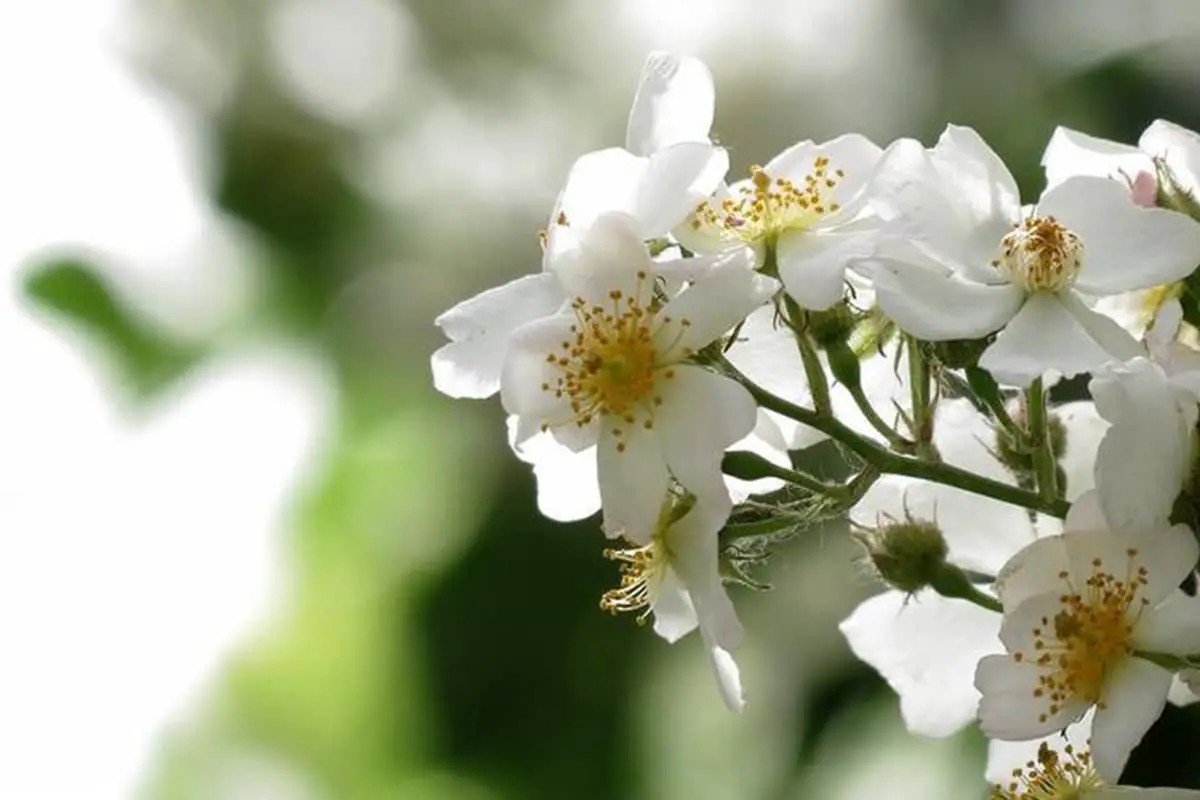
The Ivy Flower, scientifically known as Hedera helix, blooms in late autumn to early winter, typically from September to November, after most other flowers have completed their seasonal display. This timing is significant, as it symbolizes the final act or denouement in the annual cycle of flowering plants. The Ivy’s small, inconspicuous greenish-yellow flowers appear in spherical umbels, creating a subtle yet captivating display against its dark, evergreen foliage.
Culturally, the Ivy Flower has come to represent a profound and rare love, so beautiful that it is believed to never manifest again. This symbolism likely stems from its late-blooming nature and its association with fidelity and eternal attachment in various European traditions.
In horticultural terms, while the Ivy plant itself is perennial and evergreen, its flowering cycle does not promise an immediate rebirth of blossoms. The flowers give way to dark berries that persist through winter, providing essential food for birds and other wildlife. This characteristic contributes to its representation as the end of a journey, symbolizing the completion of a natural cycle rather than a continuation.
The Ivy Flower’s role in the ecosystem and its cultural significance make it a poignant symbol of life’s transitions. It reminds us of the beauty found in endings and the importance of each stage in natural processes. While it may represent an impending conclusion, the Ivy’s persistent foliage also embodies resilience and continuity through changing seasons.
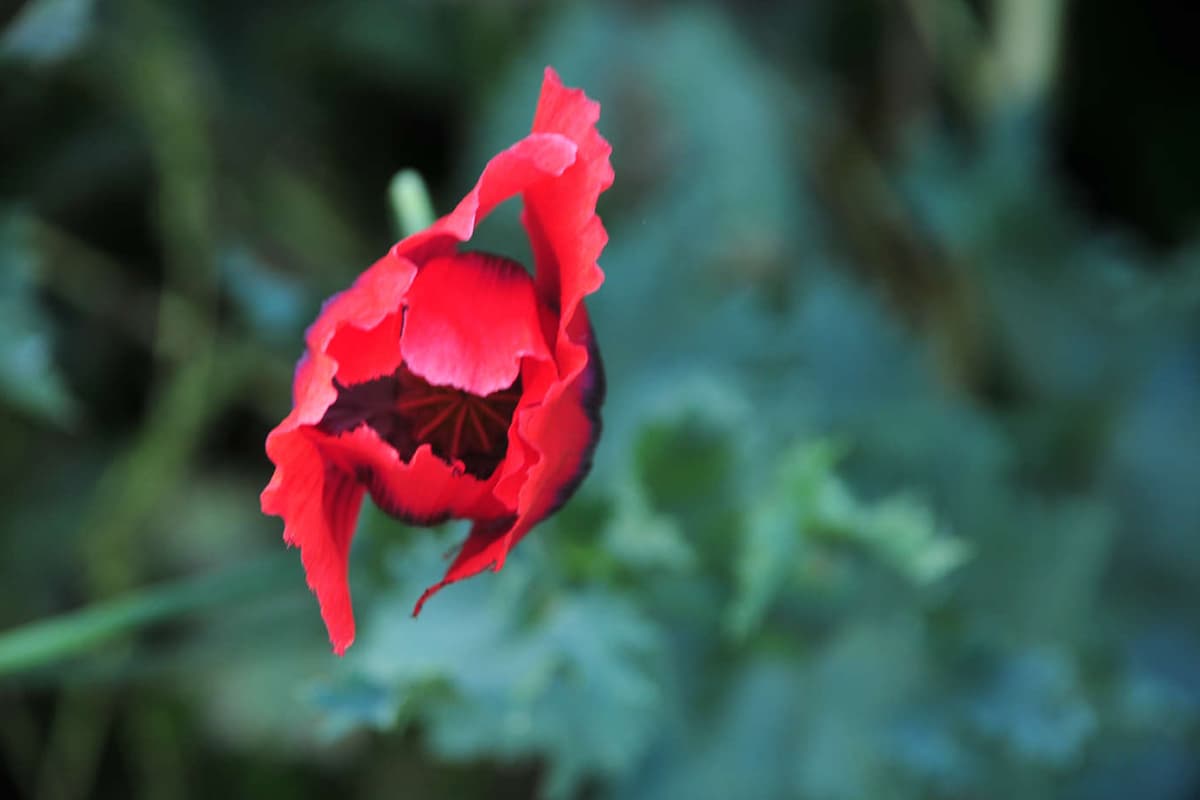
The Poppy flower (Papaver spp.) is a complex botanical subject with both cultural significance and pharmaceutical importance. While certain species, particularly Papaver somniferum, are indeed used for opiate production in some regions, it’s crucial to note that the genus Papaver contains numerous species with diverse characteristics and uses.
Poppies have been cultivated for thousands of years, not only for their medicinal properties but also for their striking beauty in gardens and landscapes. The vibrant red petals of Papaver rhoeas, for instance, have become an enduring symbol of remembrance for fallen soldiers in many Western countries.
The flower’s association with death stems from multiple factors. Historically, the sedative effects of opium derived from poppies were sometimes used to ease the pain of the dying. Additionally, the addictive nature of opiate drugs can lead to severe health consequences, including death from overdose.
However, the symbolism of poppies is multifaceted. In many cultures, they represent not only death but also sleep, peace, and even resurrection. The fleeting nature of the poppy bloom – its delicate petals lasting only a few days – has led to its association with both the transience of life and the intensity of passionate, short-lived experiences.
The poppy’s allure can indeed be likened to an intoxicating love – beautiful and intense, yet potentially dangerous if not approached with caution. This duality makes the poppy a powerful metaphor in art and literature, representing the fine line between ecstasy and oblivion, pleasure and pain, life and death.
In horticultural contexts, many poppy species are prized for their ornamental value and ease of cultivation. Gardeners often grow varieties like the Iceland poppy (Papaver nudicaule) or the Oriental poppy (Papaver orientale) for their stunning blooms and ability to naturalize in suitable conditions.
Thus, while the poppy flower can symbolize a love intertwined with death, it’s important to recognize its broader cultural, historical, and botanical significance. Its meaning encompasses themes of remembrance, beauty, transience, and the complex interplay between life’s joys and sorrows.
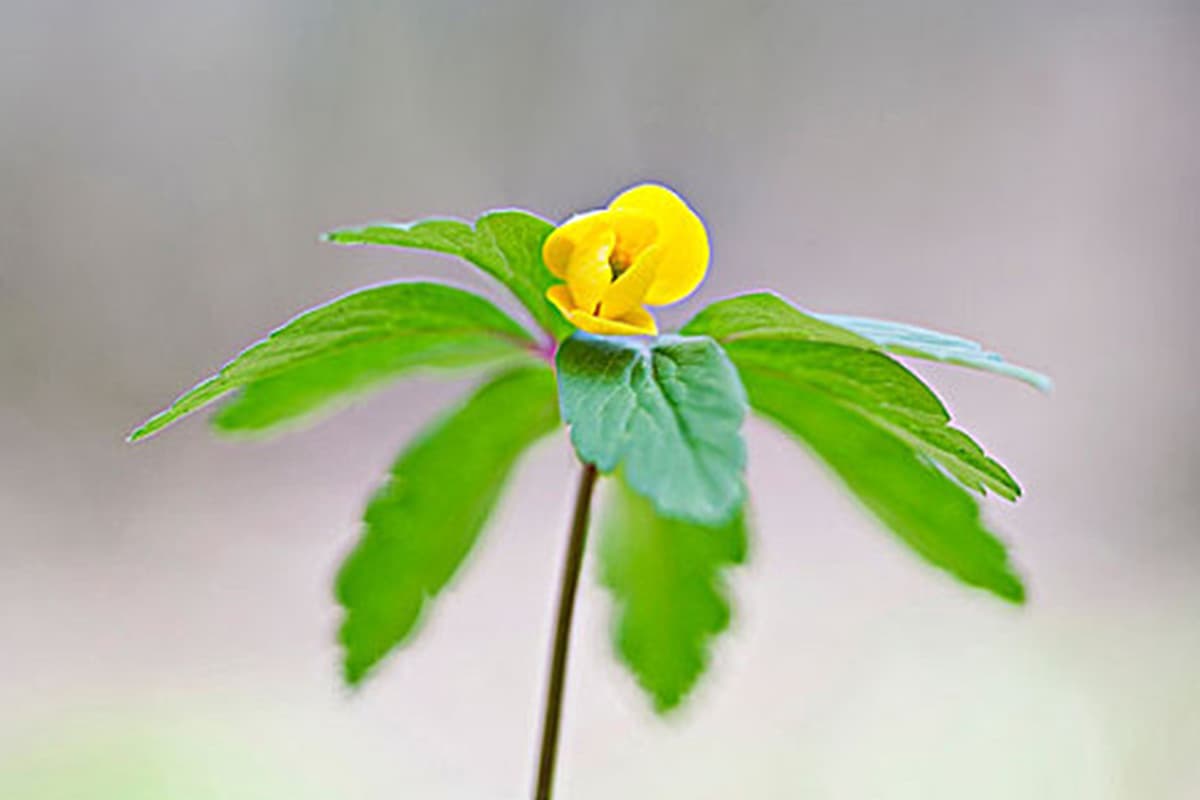
Billy Buttons, scientifically known as Craspedia globosa, are unique flowers that come in various colors, each carrying its own symbolic meaning. These distinctive blooms, native to Australia and New Zealand, are characterized by their spherical flower heads composed of numerous tiny florets, creating a textured, globe-like appearance.
The Yellow Billy Button, with its vibrant golden hue, carries a poignant symbolism: the end of a friendship. This meaning stems from the flower’s resilience and ability to thrive in harsh conditions, much like the strength required to move on from a broken relationship.
In the language of flowers, the Yellow Billy Button represents the difficult decision to conclude a friendship that has been compromised. It symbolizes the emotional process of recognizing when trust has been irreparably damaged and acknowledging the need to distance oneself from a relationship that no longer serves a positive purpose.
The robust nature of Billy Buttons, which can retain their shape and color even after being dried, further reinforces this symbolism. It suggests that while the friendship may have ended, the lessons learned and personal growth achieved during that relationship endure, much like the flower’s lasting beauty.
In garden design and floral arrangements, Yellow Billy Buttons can be used to create visual interest and texture. Their unique form and color make them excellent accent flowers, adding depth and dimension to bouquets or landscape plantings. When incorporated thoughtfully, they serve as a subtle reminder of the importance of nurturing healthy relationships while having the courage to let go of those that have run their course.
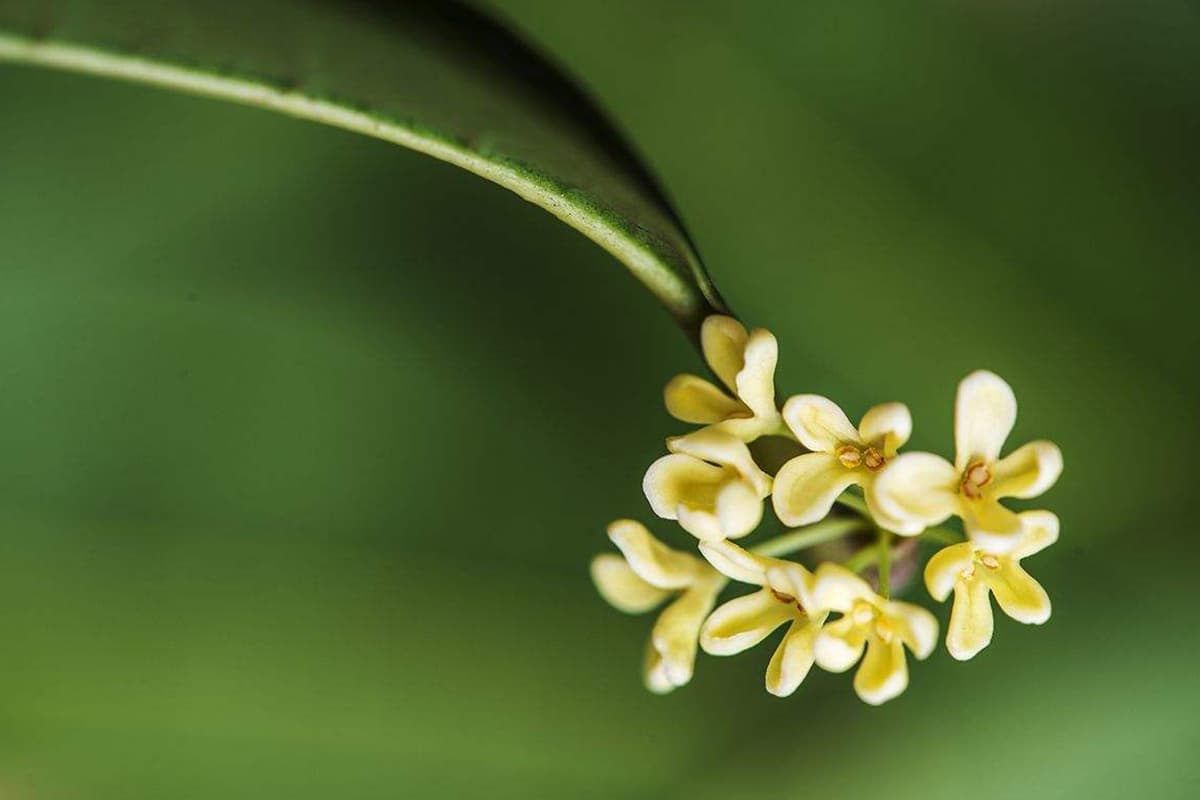
The Bay Laurel (Laurus nobilis), an evergreen tree native to the Mediterranean region, possesses a complex and intriguing nature that extends beyond its aromatic leaves.
While not typically grown for its flowers, the Bay Laurel does produce small, yellowish-green blossoms in spring. These inconspicuous flowers, though not commonly used in perfumery, contribute to the plant’s overall aromatic profile. The leaves, however, are the primary source of the Bay Laurel’s distinctive fragrance and are widely used in culinary applications and essential oil production.
The distillation process of Bay Laurel leaves yields an essential oil with a potent, spicy-sweet aroma. This oil is indeed used in perfumery, adding depth and complexity to fragrances. However, it’s crucial to note that, like many essential oils, Bay Laurel oil should be used with caution. When properly diluted and used as directed, it’s generally safe for aromatherapy and topical applications. Undiluted or improperly used, it can cause skin irritation or other adverse reactions.
The toxicity of Bay Laurel is often misunderstood. While the essential oil and leaves contain compounds that can be harmful if ingested in large quantities, the culinary use of Bay leaves is safe when used as intended. The leaves are typically removed from dishes before serving and are not meant to be eaten whole.
The Bay Laurel’s association with darker connotations and bewitchment stems from its rich historical and mythological significance. In ancient Greece and Rome, the Bay Laurel was sacred to Apollo, the god of prophecy, and was believed to impart the gift of foresight. Wreaths of Bay Laurel leaves crowned victors and poets, symbolizing glory and achievement.
The concept of bewitchment or delusion associated with Bay Laurel likely derives from its use in various magical and medicinal practices throughout history. Its aromatic properties were thought to induce altered states of consciousness, leading to its reputation for enchantment and mystical insight.
In the language of flowers, the Bay Laurel’s meaning encompasses not only bewitchment but also glory, success, and strength. Its dual nature – both revered and approached with caution – reflects the complexity of human perceptions and the power attributed to this ancient, aromatic plant.
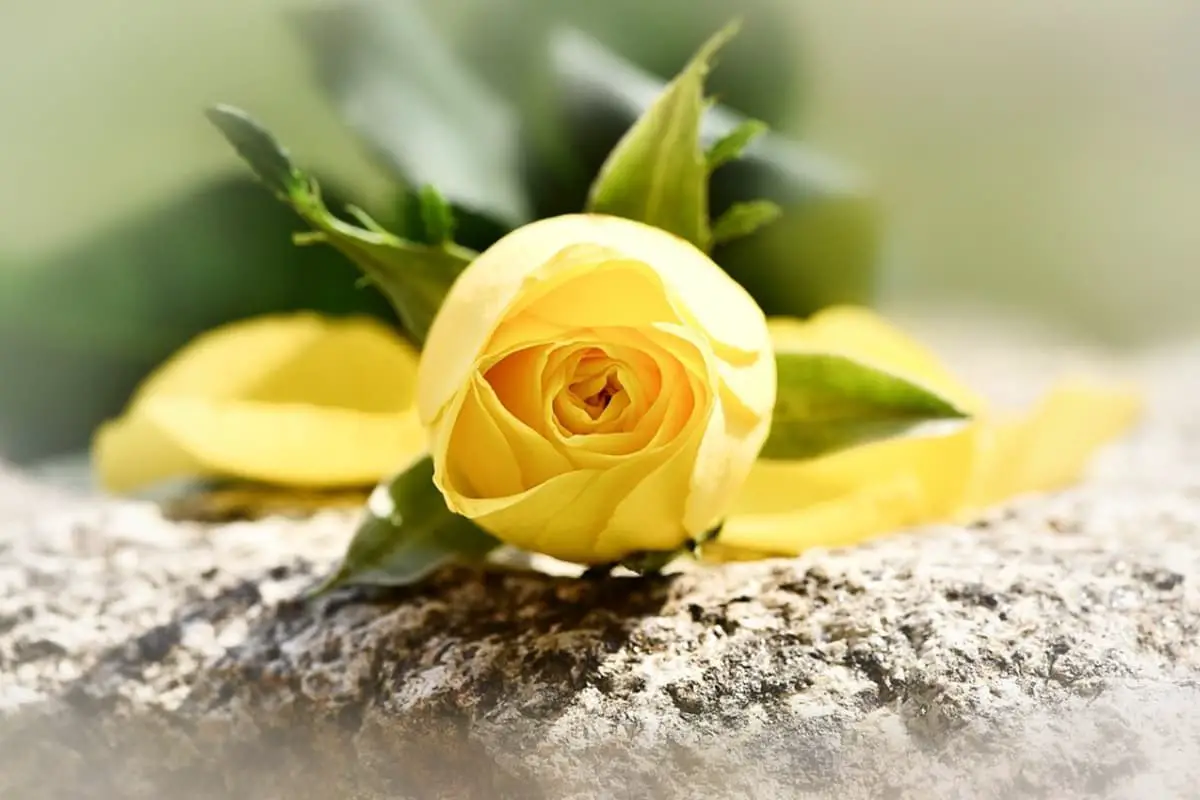
The Yellow Rose primarily symbolizes friendship, joy, and warm affection, making it a vibrant and cheerful choice among roses.
While historically there have been some negative connotations associated with yellow roses in certain cultures, modern interpretations overwhelmingly view them in a positive light. Today, yellow roses are widely recognized as symbols of platonic love, happiness, and new beginnings.
In the language of flowers, yellow roses convey:
Horticulturally, yellow roses (Rosa spp.) come in various shades from pale lemon to deep golden hues. They were first discovered growing wild in the Middle East in the 18th century and have since been cultivated into numerous varieties. Popular cultivars include ‘Graham Thomas’, ‘Julia Child’, and ‘Sunsprite’.
When incorporating yellow roses in gardens or floral arrangements, they pair beautifully with purple flowers for a striking contrast, or with other warm tones like oranges and reds for a sunset-inspired palette. Their cheerful color can brighten up any space, making them a favorite choice for both indoor and outdoor settings.
In conclusion, while some may still associate yellow roses with older, negative symbolism, their contemporary meaning is overwhelmingly positive, representing the warmth of friendship and the brightness of joy.
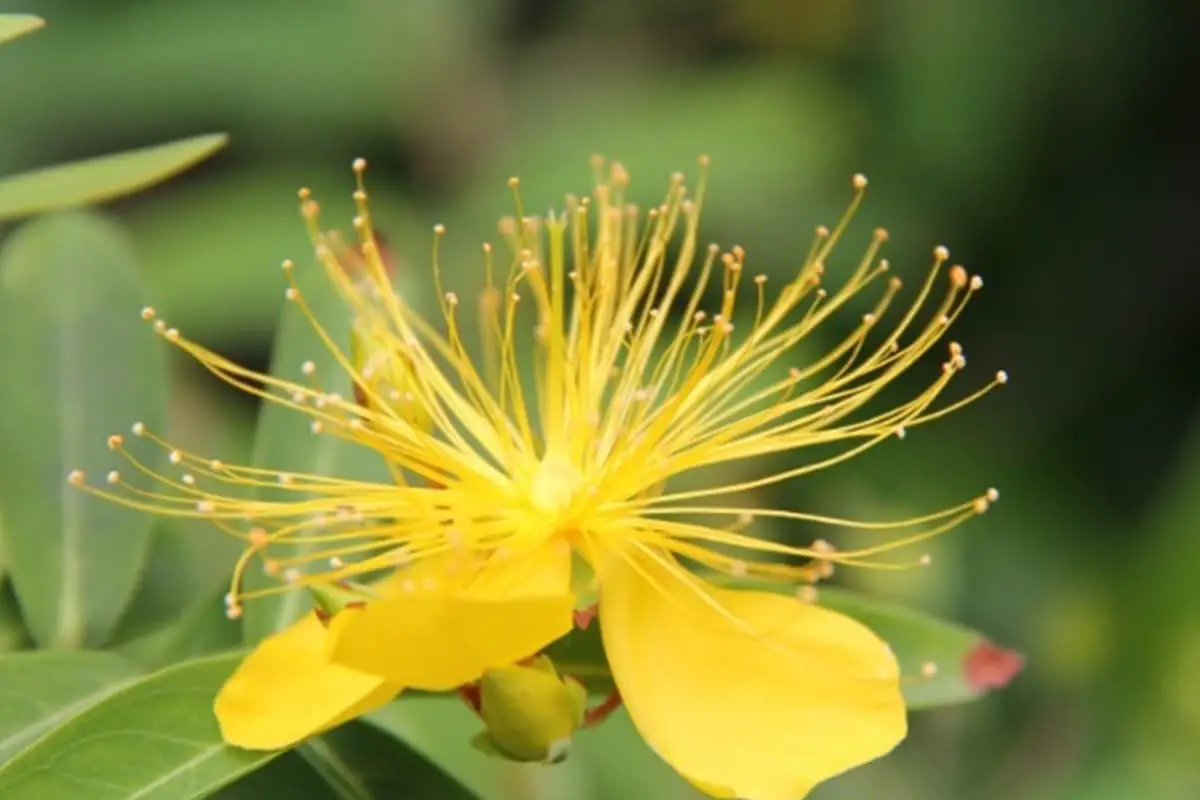
The Higanbana flower (Lycoris radiata), also known as the Red Spider Lily or Hurricane Lily, is inextricably linked to a poignant Japanese legend. This striking crimson bloom, with its long stamens resembling spider legs, carries a deep cultural significance that extends beyond its botanical beauty.
According to folklore, a young man named Hideki, driven by compassion, secretly used his family’s closely guarded medicinal knowledge to aid someone in need. This act of kindness, however, led to dire consequences. Tragically, Hideki’s own brother, viewing this as a betrayal of family secrets, took his life.
The legend posits that the Higanbana flower sprouted from the very ground where Hideki’s blood was spilled, symbolizing his unfulfilled desire for justice. This origin story imbues the flower with a complex floral language, speaking to the darker aspects of human emotion – primarily revenge, but also loss, abandonment, and the finality of death.
In Japanese culture, the Higanbana is often associated with the autumnal equinox and is commonly found in graveyards or along paths to temples. Its bloom coincides with the Buddhist holiday of Ohigan, further cementing its connection to the afterlife and the ephemeral nature of existence.
The flower’s dual nature – beautiful yet tied to tragedy – makes it a powerful symbol in literature and art. It serves as a reminder of the consequences of betrayal and the consuming nature of vengeance, while also representing the cycle of life and death.
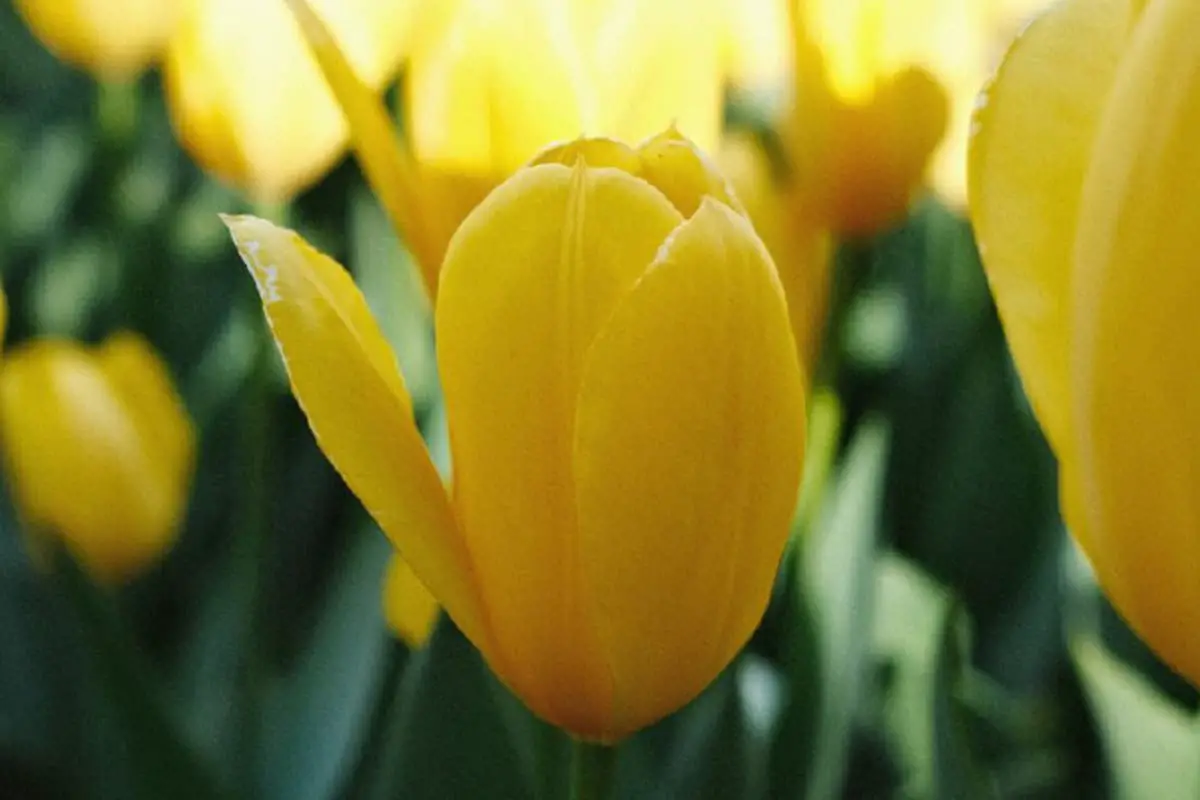
The Yellow Tulip (Tulipa gesneriana var. lutea) stands apart from its colorful counterparts in the tulip family, carrying a poignant symbolism that contrasts with the more optimistic meanings often associated with tulips.
While many tulip varieties convey messages of friendship, affection, or joyful love, the Yellow Tulip bears the weight of unrequited or hopeless love. This golden-hued bloom represents a love that has lost its vitality, a passion that has dimmed, or affections that remain unreciprocated. The bright, sunny color of the petals seems to belie the melancholy sentiment it carries, creating a complex emotional duality.
In the language of flowers, gifting a Yellow Tulip might express:
The Yellow Tulip’s symbolism extends beyond personal relationships, sometimes representing broader themes of disillusionment or the loss of optimism. This deeper meaning has roots in historical events, such as the “Tulip Mania” of 17th century Holland, where the collapse of the tulip market left many in financial ruin, turning the once-prized flowers into symbols of lost hope.
Despite its somber connotations, the Yellow Tulip remains a striking and beautiful flower. In horticultural practice, it is valued for its ability to bring bright splashes of color to spring gardens, often blooming from mid to late spring. These tulips thrive in well-drained soil and full sun, requiring proper care to prevent bulb rot.
While the Yellow Tulip may not be the most popular choice for romantic bouquets due to its symbolism, it holds a unique place in the world of floral communication. Its complex meaning makes it an intriguing subject for artists and poets, who often use the flower to explore themes of longing, acceptance, and the nuanced nature of love.
In contemporary floral design, Yellow Tulips are sometimes combined with other flowers to create more nuanced messages or to balance their symbolism with more positive elements. When used thoughtfully, they can add depth and emotional resonance to floral arrangements, making them a valuable tool in the skilled florist’s repertoire.
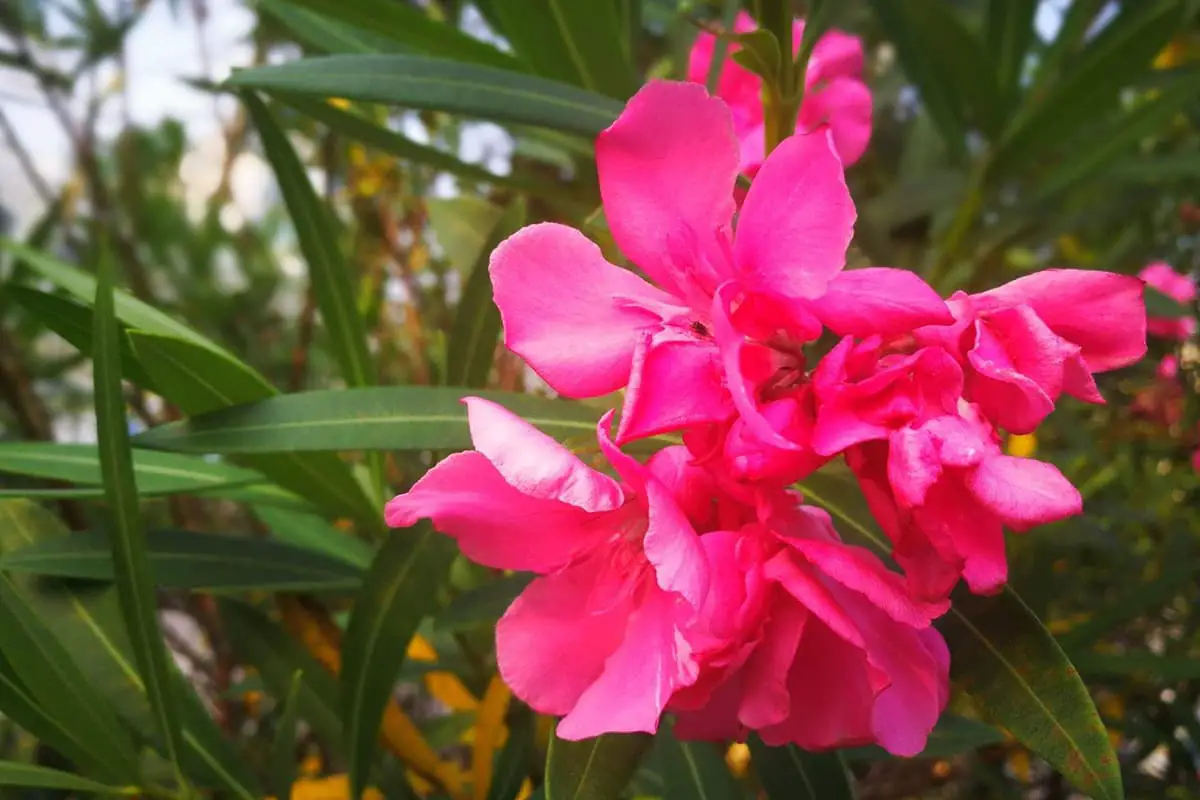
The Oleander (Nerium oleander), a striking yet hazardous ornamental shrub, contains potent cardiac glycosides throughout its structure, rendering it highly toxic. Ingestion of any part of this plant can lead to severe poisoning, potentially resulting in fatal cardiac arrhythmias in extreme cases.
The Pink Oleander, a captivating variety with its soft rosy hues, carries a dark folklore. Legend whispers that these blossoms emerge from the intermingled tears and blood of those who have suffered profound heartbreak, their anguish and subsequent bitterness towards former lovers metamorphosing into these bewitching yet perilous flowers.
In the language of flowers, the Pink Oleander conveys an exceptionally negative sentiment. Unlike many blooms that symbolize love or joy, this variety represents a potent curse. Its meaning serves as a stark warning, embodying the dangerous allure of revenge and the toxic aftermath of love turned to hatred.
Horticulturalists and landscapers, while appreciating the Oleander’s drought-tolerance and vibrant blooms, exercise extreme caution in its cultivation and placement, particularly in public spaces or households with children or pets. Despite its beauty, the Pink Oleander stands as a reminder of the thin line between love and loathing, and the potential for beauty to conceal danger.
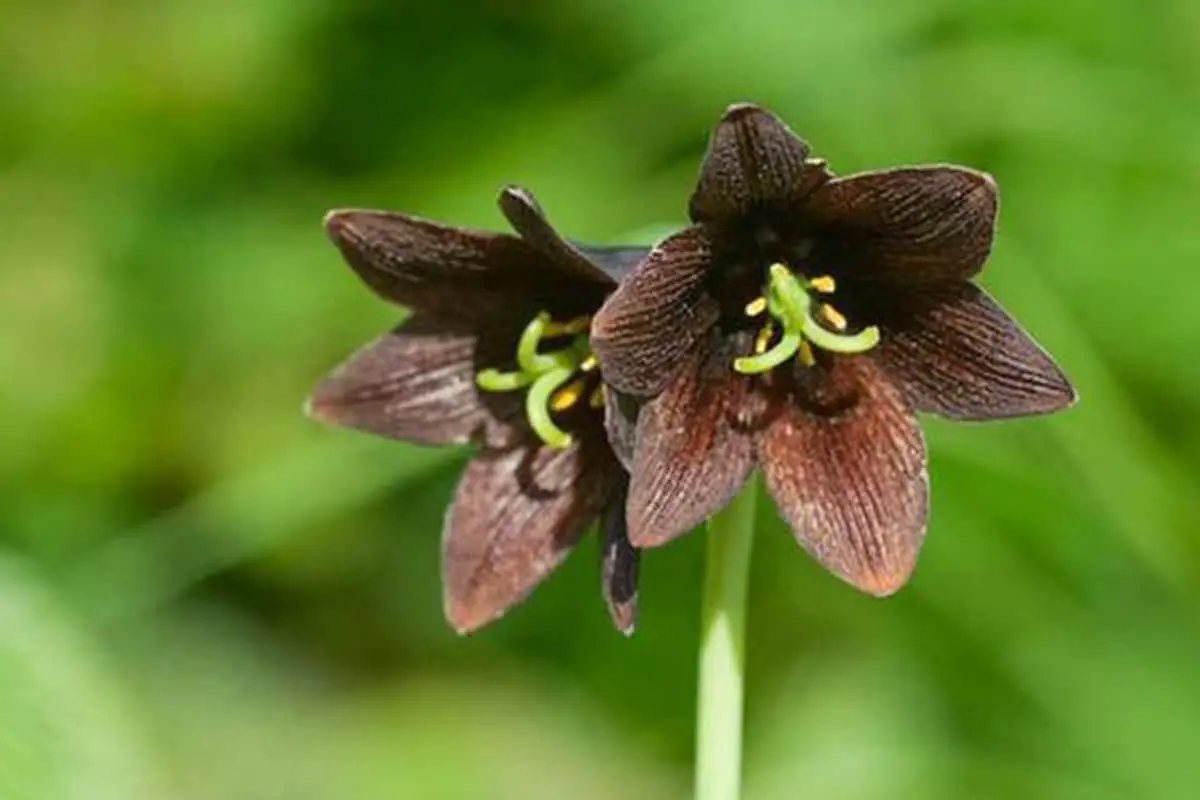
The Black Lily, scientifically known as Fritillaria camschatcensis, is a striking perennial that thrives in the alpine and subalpine regions of high-altitude mountains. Its unique habitat, often found in rocky crevices and meadows above the treeline, imbues it with an aura of lofty solitude and resilience.
This remarkable flower boasts petals of a deep, purple-black hue, which can appear almost jet black in certain lighting conditions. The color is not just visually striking but also rare in the plant kingdom, making the Black Lily a subject of fascination for botanists and gardeners alike. Its dark coloration is a result of high concentrations of anthocyanin pigments, which also serve to protect the plant from intense UV radiation at high altitudes.
The Black Lily’s appearance exudes a strong sense of mystery, provoking a desire to explore its enigmatic beauty. This allure is reminiscent of a cursed heart that struggles to find liberation – a metaphor that speaks to the flower’s ability to thrive in harsh, isolated environments where few other plants can survive.
In the language of flowers, the Black Lily is often associated with pride, power, and mystery. Its ability to stand tall and bloom in challenging conditions symbolizes strength and resilience. The flower’s rarity and unique coloration have also led to its association with exclusivity and nobility in some cultures.
Gardeners who wish to cultivate this extraordinary plant should note that it requires well-drained, slightly acidic soil and cool temperatures. The Black Lily is best suited for rock gardens or alpine house environments that can mimic its natural mountain habitat. With proper care, this captivating flower can bring a touch of alpine mystery and elegance to carefully curated gardens.